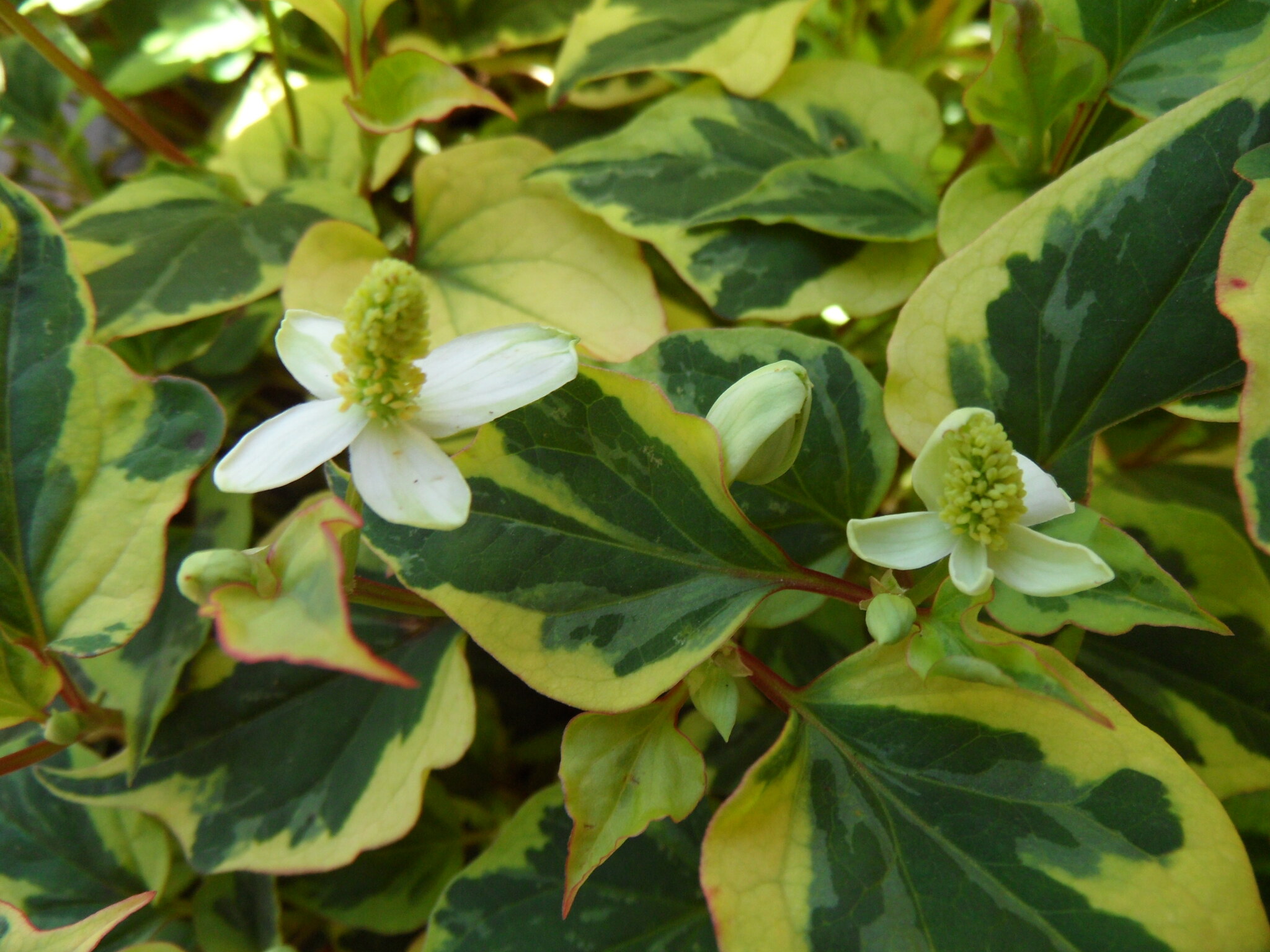
Low growing, foul-smelling stoloniferous herbs to 30 cm tall. Leaves alternate, mostly 4-8 cm long, 4-6 cm wide, blue-green with red margins, ovate, heart-shaped at base and with palmate venation. Leaf stalks red, to 5 cm long. Flower heads 1-3 cm long with whitish bracts at the base. Stamens 3-4; summer. Ovary 3-celled, each cell with about 8 ovules. Fruit a roundish capsule splitting at the top.
E Himalayas, Taiwan, Japan and Java
May become invasive, less so in dry sites where the leaves become purplish.
Division of rootstock.
Widely cultivated in SE Asia where the rhizome is used as a vegetable and especially Vietnam and China where the leaves and shoots are used in salads; it is also used medicinally for eye ailments.
Stoloniferous; leaves aromatic with palmate venation; flower head with white bracts.
Source: (1997). Saururaceae. In: . Horticultural Flora of South-eastern Australia. Volume 2. Flowering plants. Dicotyledons. Part 1. The identification of garden and cultivated plants. University of New South Wales Press.

Houttuynia cordata 'Flore Pleno'
White flower bracts double.
Houttuynia cordata 'Variegata'
Leaves pink and white variegated. An old cultivar that has become better known through the commercial names listed above. Plants with predominantly gold variegation may also be found. [Chameleon, Court Jester]